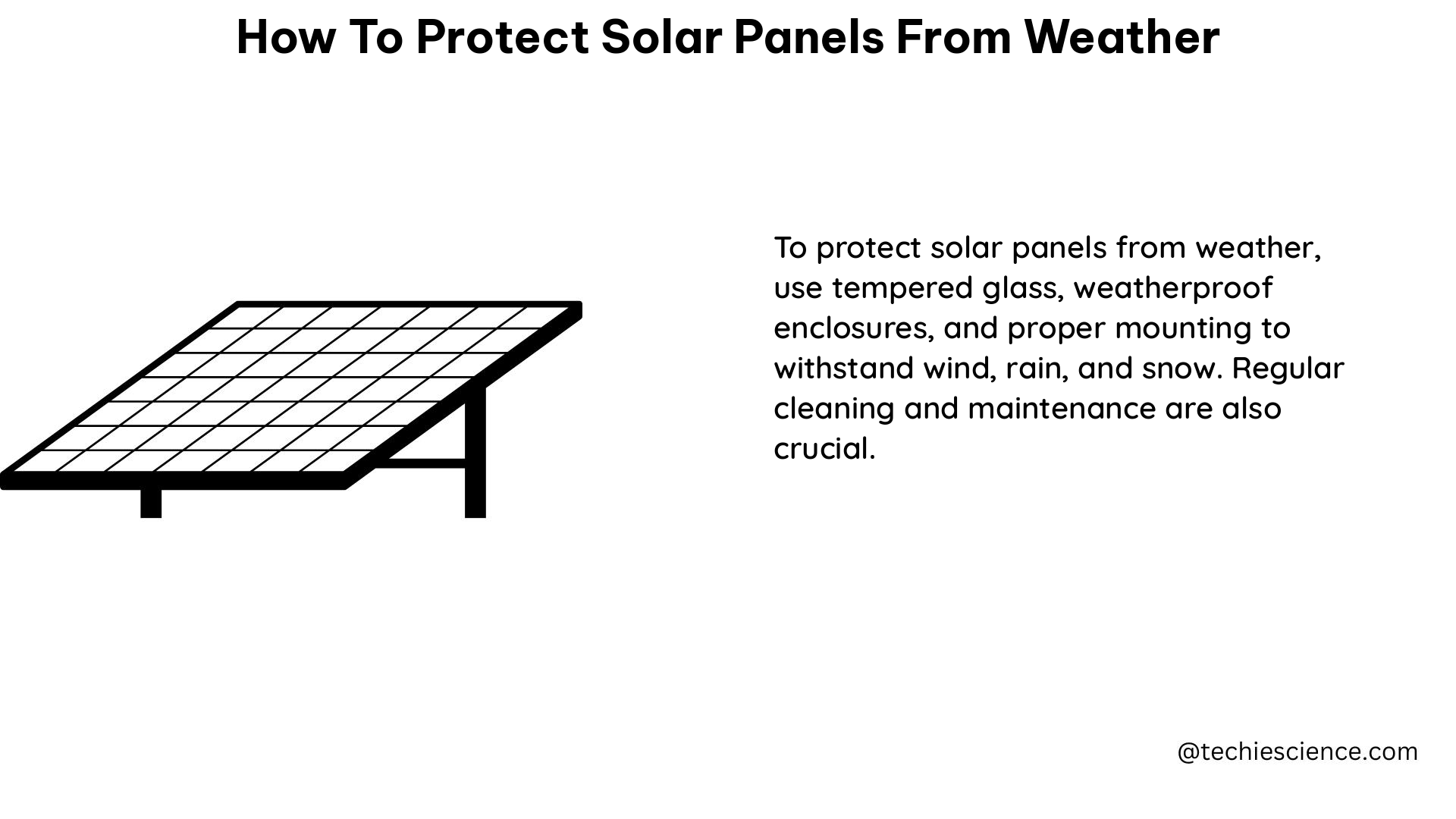Protecting solar panels from the harsh effects of weather is crucial for ensuring their long-term performance and efficiency. Solar panels are designed to withstand a wide range of environmental conditions, but taking proactive measures can further enhance their resilience and safeguard your investment. In this comprehensive guide, we’ll delve into the technical details and best practices to shield your solar panels from the elements.
Choosing Weather-Resistant Solar Panels
The foundation of weather protection starts with the solar panels themselves. Look for panels that are certified to meet the UL 61730 and IP68 standards, which ensure resistance to hail up to 3 inches in diameter and provide waterproof and dustproof properties. These panels are engineered to withstand the rigors of extreme weather conditions, including heavy rain, snow, and high winds.
When evaluating solar panel specifications, pay close attention to the following:
-
Hail Impact Resistance: Solar panels should be able to withstand hail impacts up to 3 inches in diameter without sustaining significant damage. This is typically achieved through the use of tempered glass covers and robust frame construction.
-
Wind Load Capacity: Solar panels should be designed to withstand wind loads of at least 140 mph (225 km/h) or more, depending on the local climate and building codes.
-
Snow Load Capacity: The panels should be able to support snow loads of at least 5,400 Pa (113 lbs/ft²) or more, ensuring they can safely bear the weight of accumulated snow.
-
Waterproof and Dustproof Rating: An IP68 rating indicates that the solar panels are completely protected against dust ingress and can withstand submersion in water up to 1.5 meters (4.9 feet) for up to 30 minutes.
Proper Solar Panel Installation

Correct installation practices play a crucial role in protecting solar panels from weather-related damage. Here are some key considerations:
-
Mounting Technique: Opt for through-bolting or other secure mounting methods that firmly anchor the solar panels to the roof or ground-mounted structure. Avoid using adhesives or other less reliable attachment methods.
-
Tilt Angle: Ensure that the solar panels are installed at an optimal tilt angle to facilitate the shedding of snow, rain, and debris. This helps prevent the accumulation of materials that could compromise panel performance.
-
Edge Clearance: Position the solar panels far enough from the edge of the roof or mounting structure to minimize the impact of high winds. Typically, a clearance of at least 3 feet (1 meter) is recommended.
-
Shading Avoidance: Carefully plan the layout and placement of solar panels to minimize shading from nearby structures, trees, or other obstructions. Shading can significantly reduce the energy output of the solar system.
-
Grounding and Bonding: Proper grounding and bonding of the solar panels and associated electrical components are essential for protecting against lightning strikes and static electricity buildup, which can damage the system.
Ongoing Maintenance and Monitoring
Regular maintenance and monitoring are crucial for maintaining the long-term resilience of your solar panels against weather-related threats. Consider the following practices:
-
Periodic Cleaning: Regularly clean the solar panels to remove any accumulated dirt, debris, or snow that could impede their performance. Use soft, non-abrasive materials to avoid scratching the panel surfaces.
-
Visual Inspections: Conduct regular visual inspections of the solar panels and associated components, looking for any signs of damage, such as cracks, delamination, or loose connections.
-
Performance Monitoring: Continuously monitor the energy output of your solar system to detect any sudden drops in performance, which could indicate weather-related issues or other problems.
-
Preventive Maintenance: Implement a proactive maintenance schedule to address any issues before they escalate. This may include tightening connections, replacing damaged components, or addressing any other weather-related concerns.
-
Insurance Coverage: Consider investing in comprehensive insurance coverage for your solar system, which can provide financial protection in the event of severe weather-related damage.
By following these best practices and leveraging the latest advancements in solar panel technology, you can effectively protect your solar investment from the harsh effects of weather and ensure long-term, reliable performance.
Reference:
- Array Technologies Inc. (2023, November 16). How Technology Is Protecting Solar Farms Against Extreme Weather. Retrieved from https://arraytechinc.com/blog/solar-tech/how-technology-is-protecting-solar-farms-against-extreme-weather-webinar-recap/
- GreenLancer (2024, June 14). How Durable Are Solar Panels? Retrieved from https://www.greenlancer.com/post/solar-panel-durability-extreme-weather
- IntegrateSun (2024, January 20). How to Protect Your Solar Panels from Weather Damage. Retrieved from https://www.integratesun.com/post/how-to-protect-your-solar-panels-from-weather-damage
- NREL (2024, January 24). How Extreme Weather and System Aging Affect the US Photovoltaic Fleet. Retrieved from https://www.nrel.gov/news/program/2024/how-extreme-weather-and-system-aging-affect-the-us-photovoltaic-fleet.html
- Roofing Contractor (n.d.). How to Prevent Severe Weather Damage to Solar Panels. Retrieved from https://www.roofingcontractor.com/articles/98920-how-to-prevent-severe-weather-damage-to-solar-panel

The lambdageeks.com Core SME Team is a group of experienced subject matter experts from diverse scientific and technical fields including Physics, Chemistry, Technology,Electronics & Electrical Engineering, Automotive, Mechanical Engineering. Our team collaborates to create high-quality, well-researched articles on a wide range of science and technology topics for the lambdageeks.com website.
All Our Senior SME are having more than 7 Years of experience in the respective fields . They are either Working Industry Professionals or assocaited With different Universities. Refer Our Authors Page to get to know About our Core SMEs.